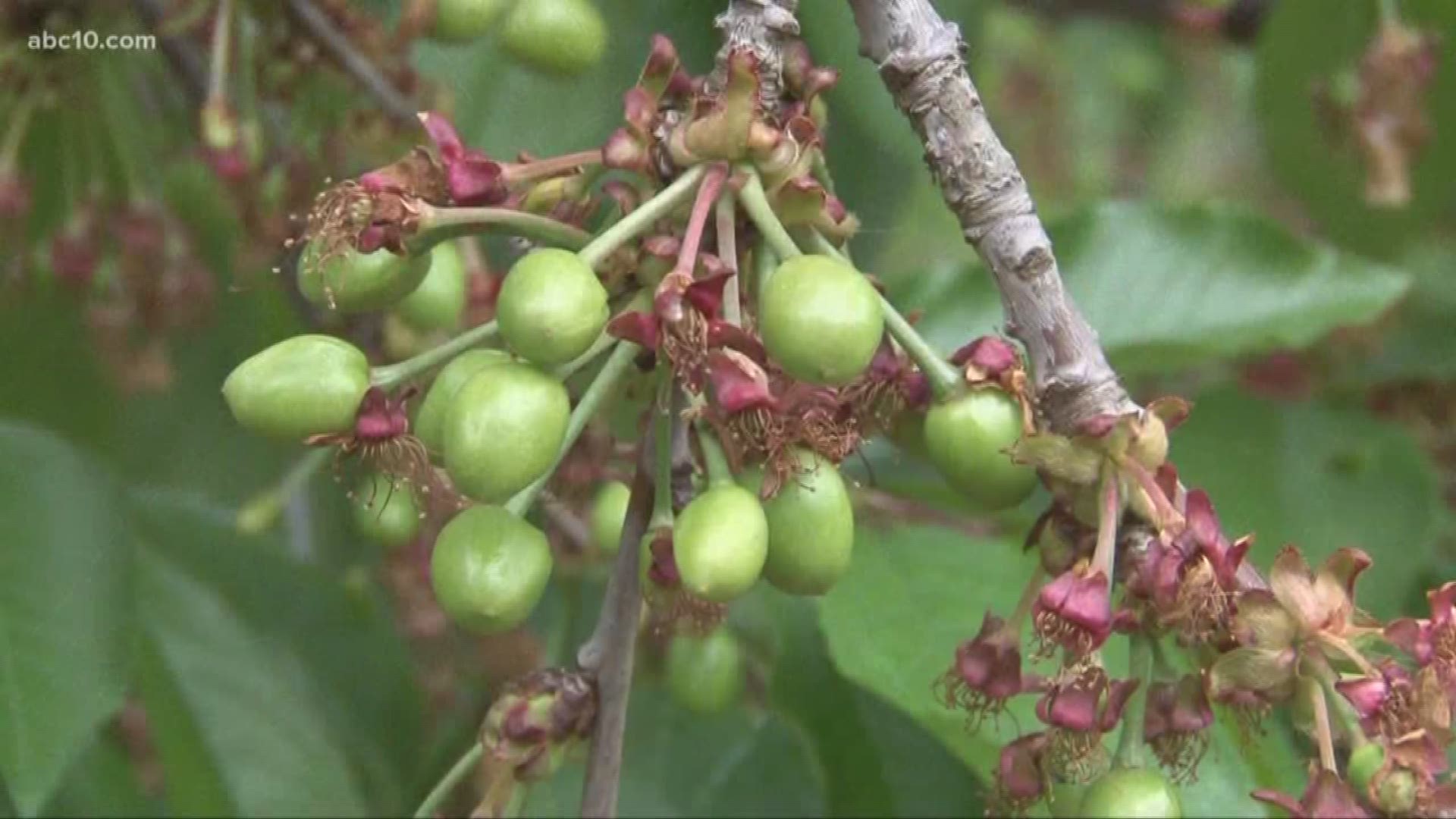SALINAS, Calif. —
When Jesus Francisco Meza Uriarte and Dian Alejandro Bienazul Atondo step into the van that will take them to a spinach field in Salinas each morning, it stinks of bleach. The van’s been sanitized between rides to kill any lingering bits of the COVID-19 virus.
They ride to work, sitting at least six feet apart, and spend about four hours harvesting, a much shorter shift than usual. While they work, the two men said they stay at least two arm lengths apart, holding their arms out to demonstrate. Their crew is kept small to encourage spreading out.
Meza Uriarte and Bienazul Atondo are H-2A farmworkers, which means they are temporary workers in the U.S. on a visa to plant, harvest and pack the produce people are buying in record numbers during the pandemic. More than 257,000 people worked in the U.S. on an H-2A visa in 2017. Now, these workers have been deemed essential by county, state and federal government regulations.
But while they are taking precautions in the fields, many H-2A farmworkers live in unsanitary, overcrowded conditions, the perfect recipe for an outbreak during a pandemic.

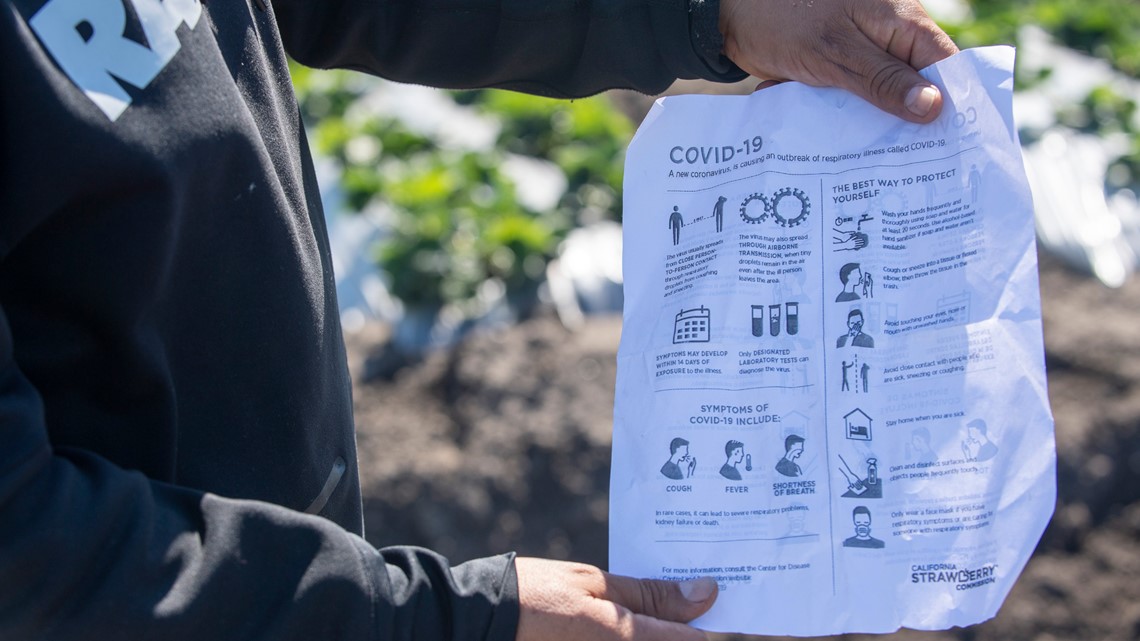
“Ag workers are uniquely vulnerable to this virus because of the close proximity they often work and live,” said California Assemblymember Robert Rivas, a Democrat representing the Salinas and Pajaro Valleys. “Farmworkers can’t often take the necessary steps to protect themselves.”
An April survey by the Centro de los Derechos del Migrante (CDM), a migrant workers’ rights organization based in the U.S. and Mexico, found that 45% percent of H-2A workers faced overcrowded and unsanitary housing conditions, such as a lack of functioning bathrooms or rat and bedbug infestations.
“They’re essential enough to bring here but not essential enough to protect,” said Mary Bauer, general counsel of the migrant workers’ group.
As the nation works to flatten the curve, lawmakers and the agriculture industry hustle to get ahead of the virus while moving produce out of the field and into grocery stores. Industry leaders fear there could be an outbreak among their employees.
“COVID-19 is a health crisis. But it could also lead to a food security crisis if proper measures are not taken,” wrote Shenggen Fan, a chair professor at China Agricultural University and the former director general of the International Food Policy Research Institute.
While lawmakers, the agricultural industry and advocates agree on the risks facing farmworkers, one of the biggest obstacles is finding affordable housing for H-2A workers in a state experiencing a housing crisis.
“This crisis is shining the light on how important the farmworker is to our country,” said Soren Bjorn, President of the Americas at Driscoll’s, a multi-billion dollar berry company based in Watsonville. “They have not always been treated with the kind of respect you see for farmworkers today, and when this is over, I hope society at large does not forget about the contribution the farmworkers have made during this.”
Essential workers
The ground floor of the Salinas motel where Meza Uriarte and Bienazul Atondo stay is full of workers like them, from rural parts of the Mexican state of Sinaloa. Their employers ferried them across the border in late March, weeks early to get ahead of the Trump administration’s closure of the U.S.’s southern border, which employers feared might impact H-2A workers.
While some things have changed at work because of the coronavirus, at the motel, which routinely houses H-2A workers, little has.
Their roommate, Juan Ahumada, from rural Sinaloa as well, said workers still sleep three or four to a room, depending on space. A peek through the doorway behind him showed four bunk beds, laid out in an L-shape.


The three of them – all in their early 20s – don’t know anyone in Mexico with the coronavirus, so they said they weren’t really concerned about getting it. But case numbers are rapidly shooting up on both sides of the border, with the U.S. surpassing 100,000 cases in early April while Mexico recently passed 3,100.
Ahumada, Meza Uriarte and Bienazul Atondo are essential to putting food on the tables of people sheltering in place, but it also means they must sleep in close quarters and show up to work – two things medical experts are urging people to avoid if possible to limit transmission.
Salinas is particularly vulnerable to an outbreak.
According to a SmartAsset analysis of Bureau of Labor Statistics and Census Bureau data from 2017 and 2018, Salinas ranks third among cities in the U.S. where the fewest people can work from home.
“Salinas, California has a workforce that is largely involved in jobs where working from home is not possible,” the analysis read. Of the 200 largest U.S. cities analyzed, Salinas had the second-largest farming, fishing & forestry workforce as a percentage of its total workforce, at 12.9%.
That makes farmwork uniquely dangerous right now. If one worker contracts the coronavirus, it could whip through a crew living or working together.
“It could be a wildfire,” said Congressman Jimmy Panetta (D-Calif).
Monterey County, home to a $8.5 billion dollar agricultural industry, was the first county in the country to create an agricultural agreement protecting employees in the field. In the last week of March, seven agencies signed off on additional worker protections, including training for workers on staying safe at home, mandatory handwashing, added bathrooms and increased distance between workers in the field.

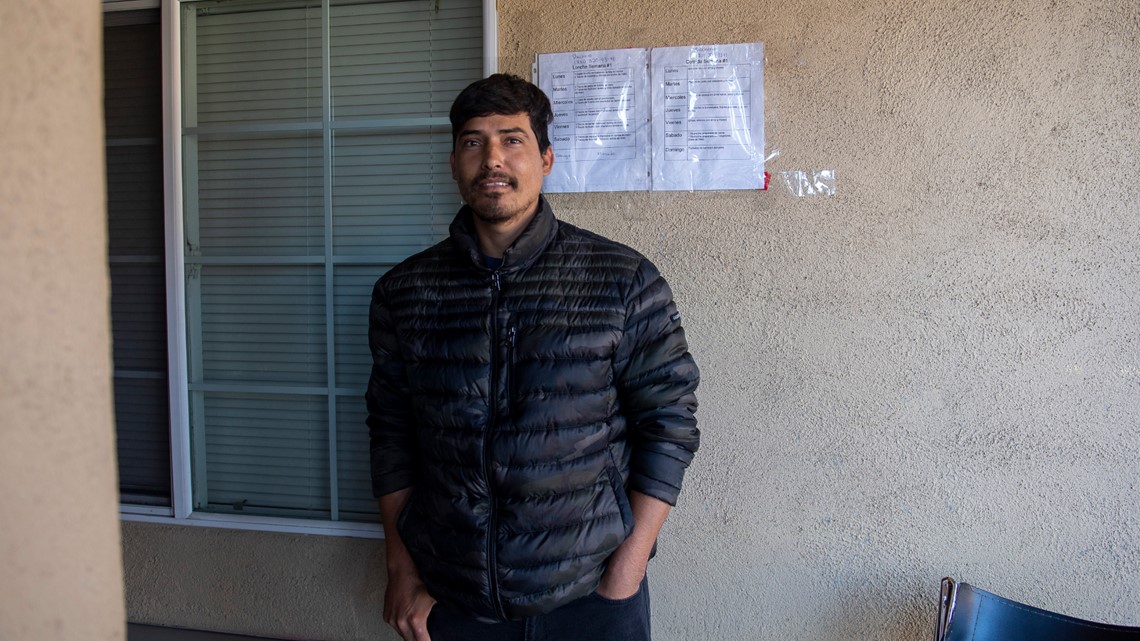
Other counties in California followed suit, adopting portions of the agreement. Cal/OSHA released its own version recently.
“From the beginning we realized it was going to be a living document,” said Monterey County Agricultural Commissioner Henry Gonzales. The agreement has been updated three times to-date; Gonzales expects it will continue to grow and change.
On a recent impromptu field visit, Gonzales recalled seeing workers shoulder-to-shoulder with certain types of machinery, the design of which had not accounted for a viral pandemic. He didn’t like that, he said, but he was glad the workers had been given masks and were otherwise practicing adequate social distancing, including staggered lunch breaks and no more than ten people aboard per bus trip.
Some lawmakers and advocates, however, doubt the advisory’s efficacy.
“The truth is, that despite this advisory that farmworkers are essential workers in this time of pandemic, there’s no hiding the fact that the federal government to an extent, and a lot of state governments, haven’t treated farmworkers as the essential workers that they are,” Assemblymember Rivas said.
Several other H-2A workers who spoke with The Salinas Californian said the training they were given consisted of being handed bleach for their motel rooms and a flyer stating they should wash their hands frequently and stay six feet apart. But the guidelines laid out by Monterey County only apply to essential workers “if feasible.”
“That’s the problem with these guidelines,” said Lucas Zucker, Policy Director for the Central Coast Alliance United for a Sustainable Economy (CAUSE). “They are ultimately suggestions. I think they can make a big difference, but there’s no proactive enforcement portion.”
Monterey County Public Health Department Director Dr. Ed Moreno, who ag leaders said designed the agreement’s health guidelines, declined to return phone calls seeking comment.
According to the survey by CDM, the migrant advocacy group, in the months before the pandemic, 35% of H-2A workers surveyed did not have necessary safety equipment, such as helmets and gloves. Of those who had the equipment they needed, 23% were forced to buy it themselves. Twenty-seven percent said they did not receive adequate training to work safely.
CDM concluded that H-2A workers are among the most vulnerable to infection from the coronavirus, said Bauer, the group’s general counsel who helped conduct the interviews.
“Over and over, they said they didn’t feel free to walk away,” said Bauer. “There are restrictions on their movement and they’re facing retaliation: that is not a worker that is going to be able to assert their rights to stay home if necessary. If their conditions are going to make them vulnerable to this virus, it’s the perfect storm of vulnerability.”
Financial consequences if workers get sick
There are no formal penalties for farmworker employers that flout best practices, endangering the lives of workers for the sake of harvesting more crops.
Industry leaders noted, however, that the penalty would be the loss of their workforce.
If they don’t take precautions, “there will be consequences, and that will be that their workers will get sick,” said Monterey County Agricultural Commissioner Henry Gonzales. “When they lose their workers, that is a financial consequence to them.”
Driscoll’s Bjorn said it would be impossible for his company – which controlled one-third of the $6 billion U.S. berry market in 2017 – to monitor every one of the hundreds growers and contractors around the world that work for them.
“There’s always somebody that wants to take a shortcut….We take responsibility for everything that happens in our supply chain,” said Bjorn. “We can’t see everything…but in the end, it is our accountability, and we can’t shy away from that.”
Should Driscoll’s find one of its independent growers or contractors ignoring safety protocols without warrant, Bjorn said they would be dropped from the program.
Some hotels and motels lie empty in typically-crowded Salinas, awaiting tourists who will no longer come. However, agricultural employers have not thinned the concentration of H-2A workers by relocating them elsewhere, said Norm Groot, Executive Director of the Monterey County Farm Bureau.
“It’s up to each company to see how they handle the spacing and the housing,” said Groot. “We can make suggestions and offer alternatives, but it’s something they have to take on themselves.
“Everyone is very concerned about keeping their workforce healthy,” Groot said. “Without a healthy workforce we don’t get the crops picked.”
CAUSE’s Zucker has particular concerns about strawberry season, a financially fruitful season for field laborers who are fast and skilled.
“Strawberry season moves its way up the coast, and during peak season there’s a strong incentive to work hard and fast, sometimes at the expense of one’s own safety,” said Zucker. “…Even if ten percent or one percent of companies are not practicing the strongest safety precautions they can, that has the potential to spread through the whole industry really quickly.”
In May, as strawberry season swings into full gear, Driscoll’s typically has about 20,000 farmworkers. Between 1,500 and 2,000 will be H-2A workers.
Bjorn said Driscoll’s urged its growers to be as stringent as possible about following best practices. It also has purchased an additional 350 wash stations in Ventura County and is telling workers that if they lack equipment, it will purchase it for them.

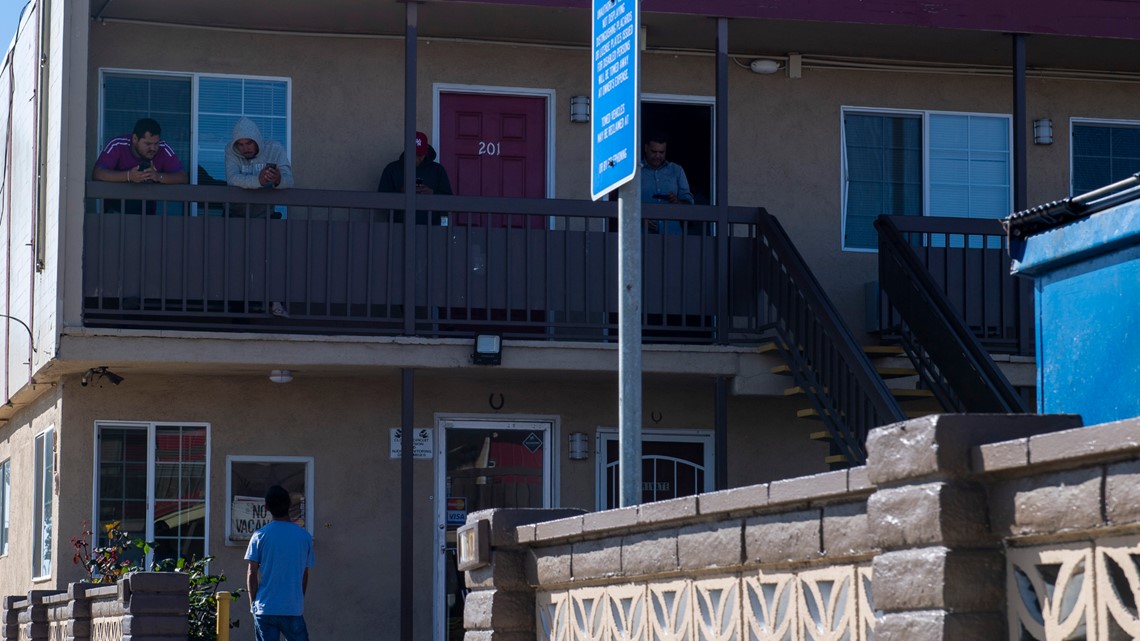
Still, he said, there is only so much employers could do about housing.
“There’s not enough affordable housing in California,” said Bjorn. “I think that’s why this population is at a pretty high risk if it does not follow all of the guidelines. And that’s the very real fear. If you do get an outbreak, it becomes a mini-New York.”
Although Driscoll’s is exploring building its own H-2A housing along the coast of California to help spread workers out, Bjorn said he didn’t see that happening quickly, nor would it do much to mitigate the crush in places like the densely-packed Alisal in Salinas.

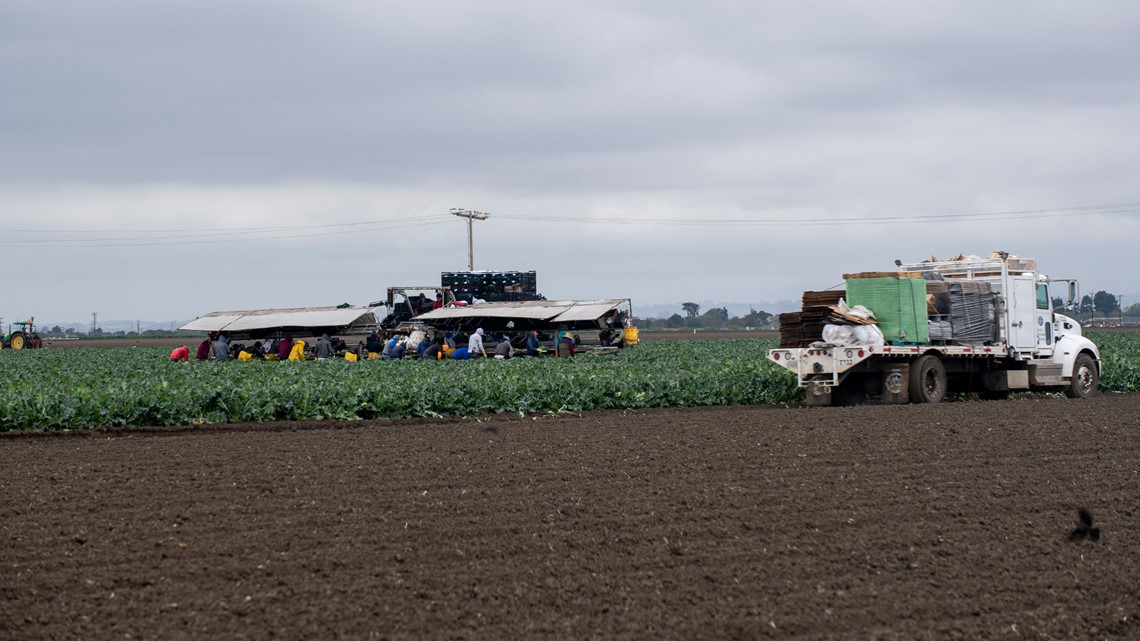
“The housing issue is very real but it can’t be solved in the short-term,” said Bjorn.
At the greatest risk are indigenous workers who speak an indigenous language such as Triqui, Zapoteco, Mixteco or Purepecha. Growing numbers of farmworkers and H-2A workers in Monterey County are indigenous people who may face challenges getting information about mandatory handwashing or social distancing.
While information is available on the county Agricultural Commissioner’s website, the responsibility to educate indigenous laborers is left to their employers, who often do not have someone who can interpret on staff.
Although there has yet to be a farmworker diagnosed with COVID-19, Driscoll’s has donated $2.5 million to clinics in the U.S. and Canada such as Salud Para La Gente in Watsonville and Clínica de Salud del Valle de Salinas, which primarily serve farmworkers in the region.
The CARES Act, which provided assistance for U.S. residents facing financial shortfalls due to the coronavirus, also contained millions for Central Coast clinics that worked with low-income residents, often farmworkers. Among those, Salud Para la Gente and Clínica de Salud received more than $2.5 million combined.
“It’s not enough,” said Panetta, who voted for the CARES Act last month and hoped to fly back to Washington, D.C. next week to vote for the CARES Act II. “We want to make sure there’s other aspects that protect essential workers.”
The grandson of a farmworker, Rivas grew up in farmworker housing, one of ten people living in a two-room shelter.
“Our conditions were bad back in the 1980s but they are nowhere near as bad as what I’ve seen,” said Rivas. “Ag is the fifth-largest economy in the world and we have the largest rate of poverty due to our housing crisis. This puts our farmworkers at risk. This pandemic threatens our farmworkers, and our entire food supply could be threatened.
“I think people do care,” continued Rivas. “They certainly recognize that as we go through this pandemic, our supermarkets are stocked with fresh food, meat and produce, because of farmworkers.”
This article is part of The California Divide, a collaboration among newsrooms examining income inequality and economic survival in California. Kate Cimini is a journalist for The Salinas Californian. She reported this story with support from the California Fellowship through the USC Annenberg Center for Health Journalism. Contact her at (831) 776-5137 or kcimini@thecalifornian.com.
David Rodriguez contributed reporting to this story.
FOR NEWS IN YOUR COMMUNITY, DOWNLOAD THE ABC10 APP:
►Stay In the Know! Sign up now for ABC10's Daily Blend Newsletter

